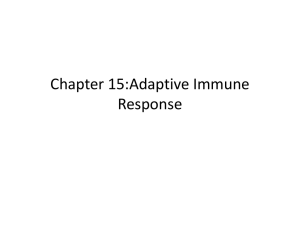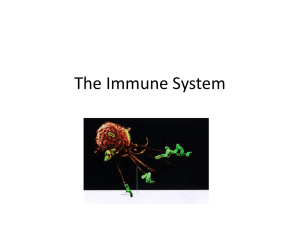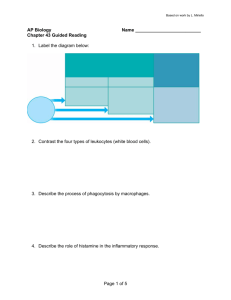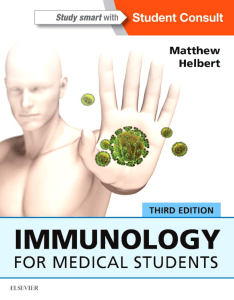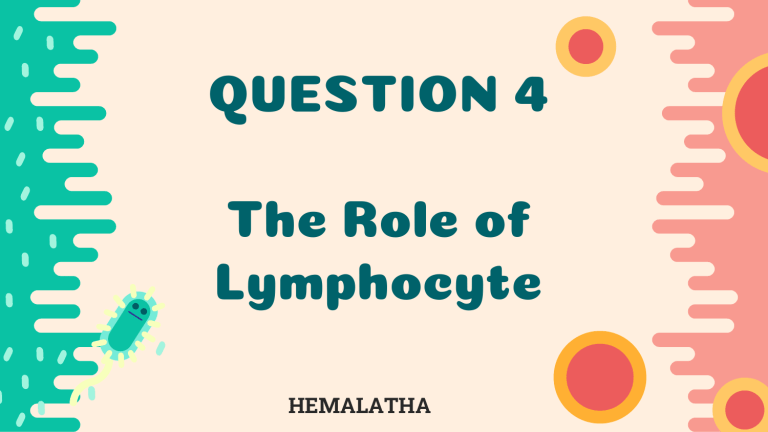
QUESTION 4 The Role of Lymphocyte HEMALATHA What is lymphocyte ? A lymphocyte is a type of white blood cell in the immune system, including both the B andT cells of the adaptive immune system and natural killer (NK) cells of the innate immune system. T cell T - cells • T cells mature in the thymus and contain T cell receptors (TCRs) that allow them to bind to antigens on MHC complexes. • T cells are a major component in cell-mediated adaptive immunity because they provide a pathway for the direct killing of pathogens. • There are two main types of T cells that express either CD4 or CD8 depending on signals that occur during T cell maturation. Types of T cells Helper T cells (CD4s) Facilitate the organization of immune responses, and can bind to MHC class II. Subtype 2 helper T cells present antigens to B cells. Subtype 1 helper T cells produce cytokines that guide cytotoxic T cells to pathogens and activate macrophages. Cytotoxic T cells (CD8s) Destroy pathogens They function associated similarly to with an antigen. natural killer cells by binding to MHC class I and releasing perforin, granzymes, and proteases to induce apoptosis in a pathogen. They are different from NK cells because they only bind to cells that express their specific antigen Types of T cells Suppressor T cells (T-reg cells) Ability to bind to self-cells. They have an immunosuppressive effect that inhibits cell-mediated immunity at the end of a response Destroys autoimmune T cells that aren’t filtered out by negative selection in the thymus. Memory T cells Created after an adaptive immune response subsides, retaining the presented antigen. They rapidly proliferate and differentiate into helper and cytotoxic T cells that are specific to that antigen should it be detected in the body again. B cell B - cells • Produce antibodies that circulate through the plasma. • Mature in bone marrow tissues and contain B cell receptors (BCRs) that bind to antigens. • After antigen presentation, the naive B cells migrate together to germinal centers within the lymphoid tissue, where they undergo extensive proliferation and differentiation into different types of mature B cells. Types of B cells Plasma cells Long-lived B cells that are the main source of antibodies. They do not have the ability to proliferate and are considered terminally-differentiated. Plasmablasts Plasma blasts are short-lived B cells produced early in an infection. Their antibodies have a weaker binding affinity than those of plasma cells. Types of B cells Regulatory B cells (B reg cells) Immunosuppressive B cells that secrete anti- inflammatory cytokines (such as IL-10) to inhibit autoimmune lymphocytes. Memory B cells Dormant B cells with the same BCR as the B cell from which they differentiated. They are specific to the antigen presented to that BCR and rapidly secrete large amounts of antigen-specific antibodies to prevent reinfection if that antigen is detected again. B cells also……. ● B cells may also function in antigen presentation ● B cells are important to adaptive immune function ● Autoreactive B cells may cause autoimmune disease that involves antibody-induced damage and inflammation. ● Certain B cells may undergo malignant transformation into cancer cells such as lymphoma, in which they continually divide and form solid tumors. THANK YOU !
